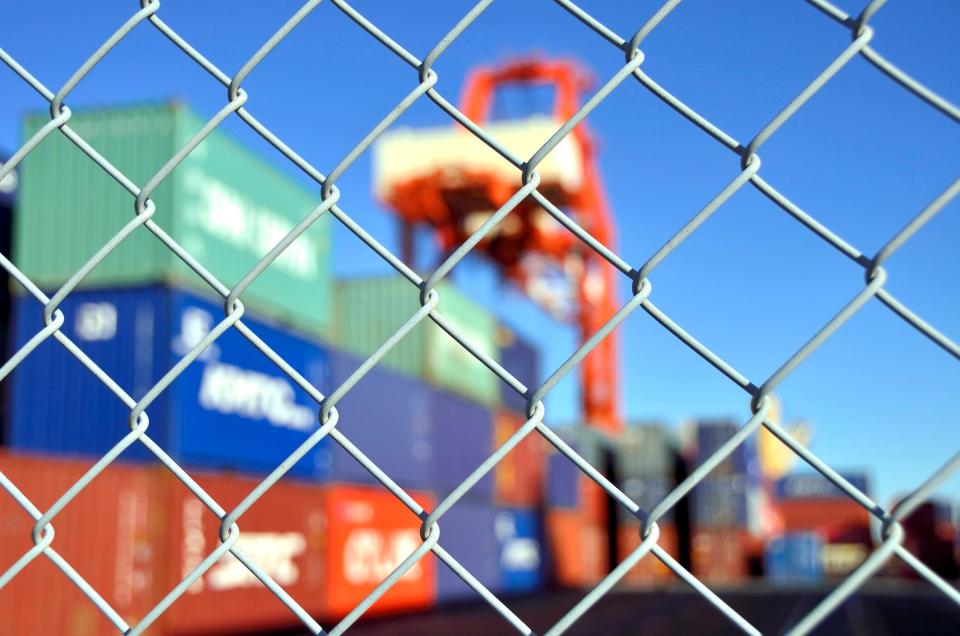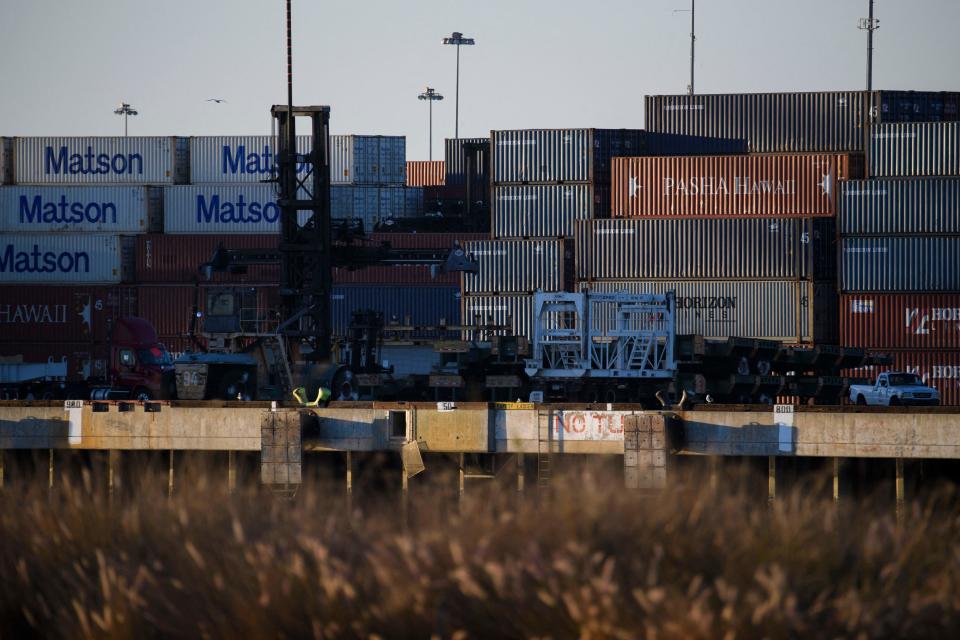Hazardous goods found for sale after consumer protection inspectors were pulled from ports during COVID-19
The government’s consumer watchdog agency has discovered widely ranging hazards among toys and other products now for sale after it secretly stopped routine inspections of imports during the pandemic.
But the Consumer Product Safety Commission still has not answered basic questions from lawmakers about the risks to consumers from its decision to send its port inspectors home for nearly six months, a safety lapse first exposed by USA TODAY.
In a new report to the U.S. Congress, the agency also failed to disclose what it plans to do about dangerous products now on the market.
It turned up many concerns in a pair of spot checks to assess the potential harm, including red flags in the paperwork of 40% of the 56 companies it deemed at highest risk for having imported unsafe products during the port inspection shutdown. The agency said it followed up with inspections and now is acting on “potential violations discovered.”
The agency also scouted online for the types of products that port inspectors commonly cite for safety violations, such as children’s toys that can contain poisonous levels of lead, the report noted. Out of 75 products tested, nearly half failed to pass safety standards. The commission said it was taking enforcement action, without providing details.
The agency declined to answer questions from USA TODAY about the report, which did not specify whether the products found online had entered through ports when inspectors were away.
“Major questions still remain,” Rep. Gus Bilirakis, the ranking member of the House subcommittee that oversees the agency, said in a statement. Bilirakis, a Florida Republican, added that the report “falls short of informing Congress on what got through our ports during the nearly six months when port investigator personnel were pulled from duty.”
Congress ordered the agency review the matter after USA TODAY obtained internal documents detailing the port shutdown from mid-March to September, and revealed the agency did not catch a single toy at the ports with poisonous lead levels between June and July, typically one of the busiest periods for violations.

More: Are your kids' Christmas gifts safe?
The 25-page report exposes other gaps in the policing of dangerous imports. The commission acknowledged it routinely screens only “a tiny fraction” of products entering the country and maintains minimal presence at major entry points for small and direct-to-consumer online purchases.
“It fails to answer Congress’ central question: What got through and where it went,” Commissioner Peter Feldman told USA TODAY. “I question whether or not we’ve done our jobs here, and I fear the consumer may still be at risk.”
Acting commission Chairman Robert Adler has said that even a dramatically expanded port presence would remain “short of what my notion is of what is needed to protect consumers.” At an April meeting, he said the agency continues to face staffing limitations despite Congress swiftly responding to the port closures by sending an additional $50 million to bolster surveillance.
“CPSC may never get beyond being the runt of the regulatory agency litter,” Adler said. “But we need to be a bigger, more aggressive runt.”
Biden nominee central to port pullout
The report comes at a crucial moment for the agency, which went into the pandemic with an annual budget of $133 million to ensure the safety of some 15,000 consumer products. This month, President Joe Biden nominated two new commissioners to the agency.
One is Alexander Hoehn-Saric, a lawyer for the House Committee on Energy and Commerce, who would be the agency’s first permanent chairman since 2017. The other is Mary Boyle, now the agency’s executive director and a leader in last year’s decision to pull inspectors from the ports.
Boyle had told commissioners, who agreed to the port pullout in private conversations in March 2020, that the agency could chase problem products later through recalls, according to detailed meeting notes obtained by USA TODAY.
Safety advocates have long stressed the importance of cutting off dangerous products before they are sold because recalls are imperfect and often have low response rates.
Boyle was also in charge of deciding when it was safe for agency staff to return to the field under a strict COVID-19 reentry plan, internal documents showed. She did not clear them until September.
In a statement, the agency defended the pandemic actions.
“Decisions made by CPSC with regard to both consumer and staff safety during the pandemic – including port staffing and the purchase and distribution of personal protective equipment – were made with the full involvement, consultation, and approval of all commissioners, as appropriate for issues of this unprecedented nature,” said spokesman Joe Martyak.
Some commissioners did raise concerns at the time about removing the port inspectors, and again when the shutdown extended through busy summer months for holiday shipments, USA TODAY has reported.
In the report to Congress, the commission said it had not stockpiled personal protective equipment before the pandemic, unlike other federal agencies that work at the ports, and it could not secure supplies such as masks and gloves until late August.
Port inspectors continued to work remotely in partnership with U.S. Customs and Border Protection agents to conduct “virtual exams at ports while working from their home offices,” according to the report.
The agency said it had recalled 65 of the kinds of consumer goods that typically would be intercepted at the ports from the time it started working remotely through this past March. It did not explain how the agency discovered they were dangerous.

The agency noted that it issued fewer safety citations because trade also decreased during the pandemic. Imports flagged through its risk assessment tracking system declined by as much as 80% during the shutdown, the report noted.
But the agency’s own charts show that such imports were back up by late summer, even as the agency’s port inspectors stayed home.
Consumer advocates called the report evidence of the challenges facing the agency.
Nancy Cowles, executive director of the nonprofit Kids in Danger, said the agency’s underfunding before the pandemic left it without the resources “to do much more than what they did.”
“I don’t think that they were wrong to try and protect staff,” she said.
Remington Gregg, an attorney at Public Citizen, called the report “honest in its assessment of where the agency had stumbled.” He said Congress shares responsibility for underfunding it.
But Gregg could not determine from the report exactly how the commission plans to improve port operations, or who is accountable. The report has no named author and its title page includes a disclaimer that it does not necessarily reflect the views of commissioners.
“It’s unclear to me who’s in charge of this, to be blunt,” Gregg said. “You can’t expect miracles, but what you can expect is improvement.”
Congress sent CPSC $50 million to improve
In April, Feldman asked for more reporting on the agency’s efforts to search for hazardous products that came through the ports while inspectors were away. Other commissioners – meeting to discuss a $50 million funding infusion passed by Congress as part of the pandemic stimulus bill – rejected his proposal.
“Make no mistake: Congress didn’t provide this extra funding because it thought we were doing a good job, or that it agreed with the decisions the commission had made throughout the pandemic,” Feldman said during the hearing.
The spending plan, which passed unanimously, increased the number of ports at which the agency has inspectors, from 18 to 22. The agency plans to add 55 positions ranging from support staff to screeners of incoming online purchases.
“While I don’t love the circumstances that led to this increase,” Commissioner Elliot Kaye said in the meeting, “I am grateful that Congress finally recognized that we do need additional assistance both at the agency writ large, but especially at the ports.”
Kaye and agency Commissioner Dana Baiocco did not comment on the report.
Democratic Sen. Richard Blumenthal of Connecticut, who was critical of the agency’s initial pandemic response, said in a statement that the report showcases the agency’s “urgent need for increased funding and staffing.”
Rep. Jan Schakowsky, an Illinois Democrat who chairs the House subcommittee that oversees the commission, supports a Biden administration proposal to raise the agency’s annual budget by more than 25%, to $170 million.
“Staff limitations continue to plague the agency,” Schakowsky said in a statement. The report “shows yet again that the CPSC needs more funding and resources so it can do its job to keep consumers safe.”
Letitia Stein and Tricia Nadolny are reporters on the USA TODAY investigations team. Contact Letitia at lstein@usatoday.com, @LetitiaStein, by phone or Signal at 813-524-0673 and Tricia at tnadolny@usatoday.com or @TriciaNadolny.
This article originally appeared on USA TODAY: Consumer safety at risk after COVID-19 product screening lapse

